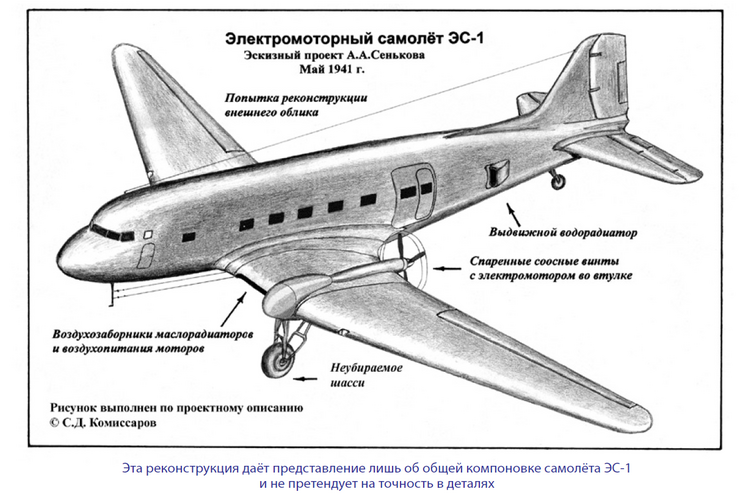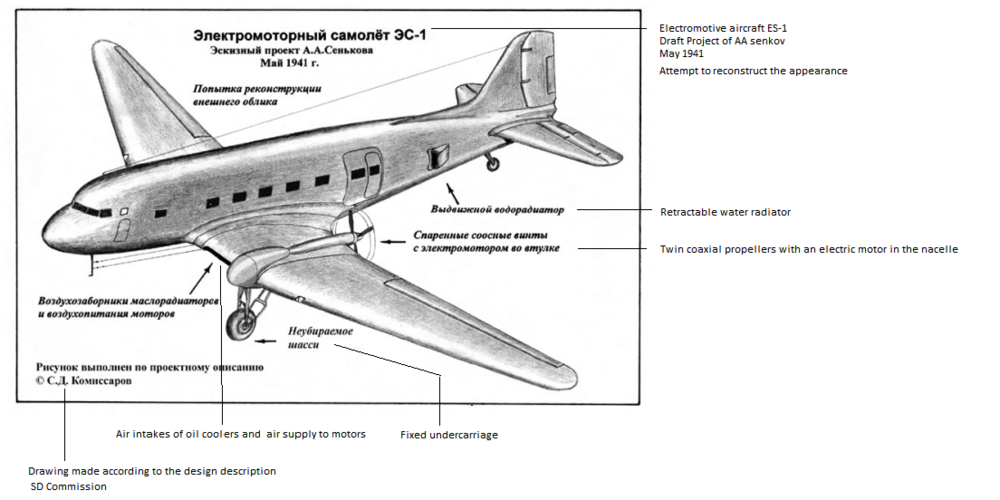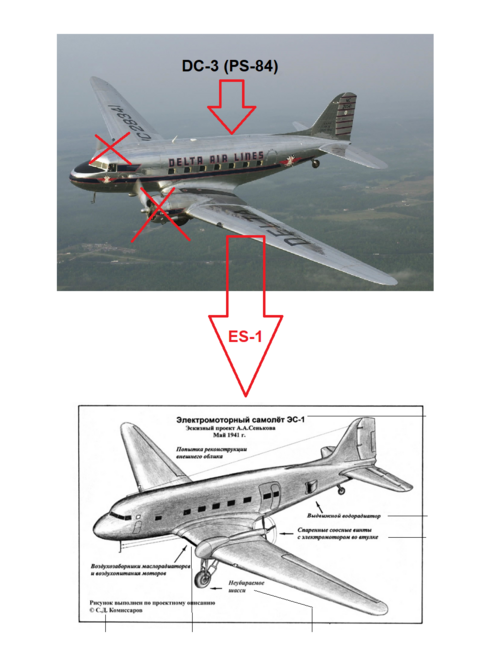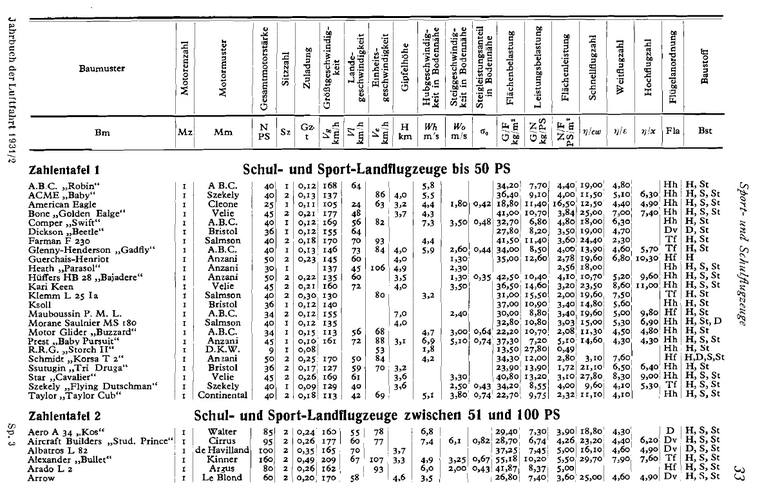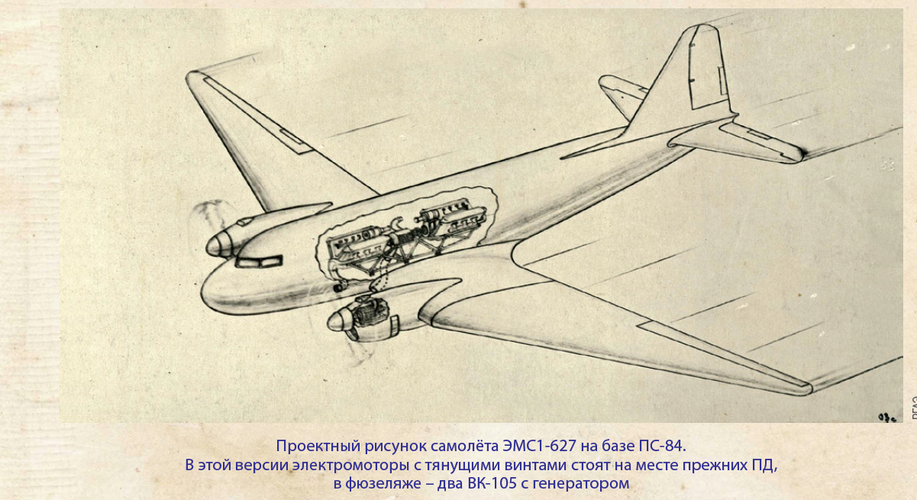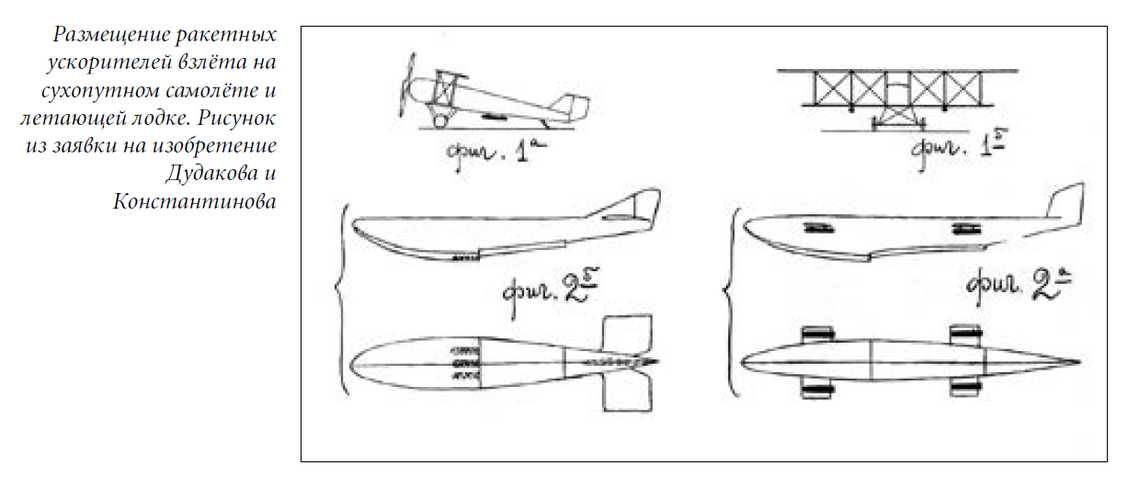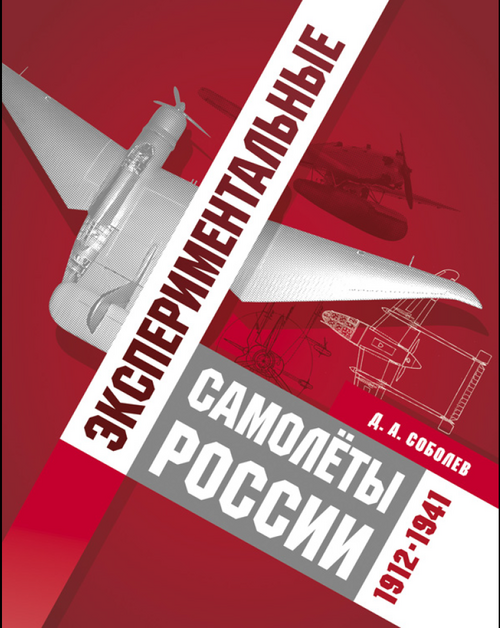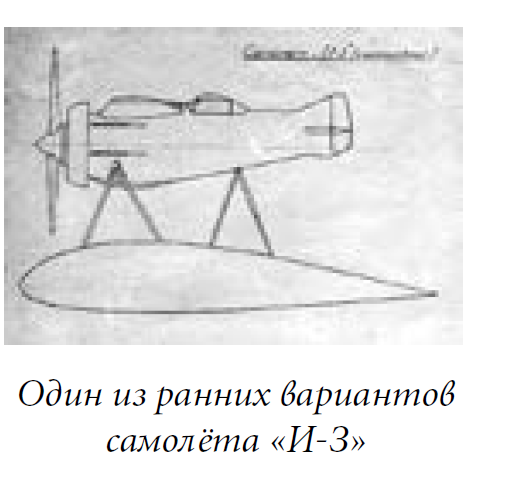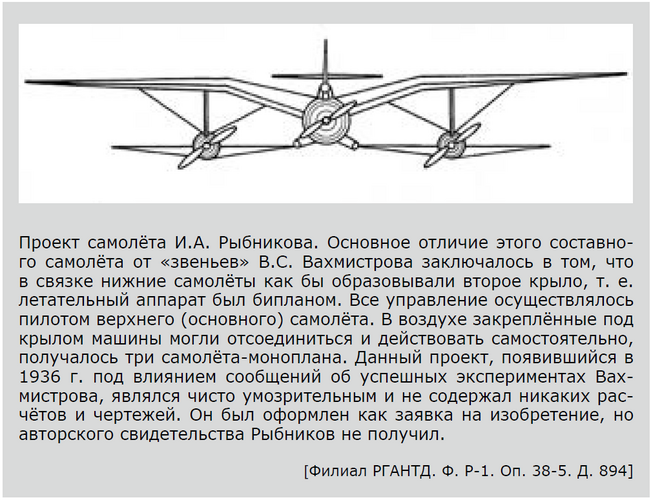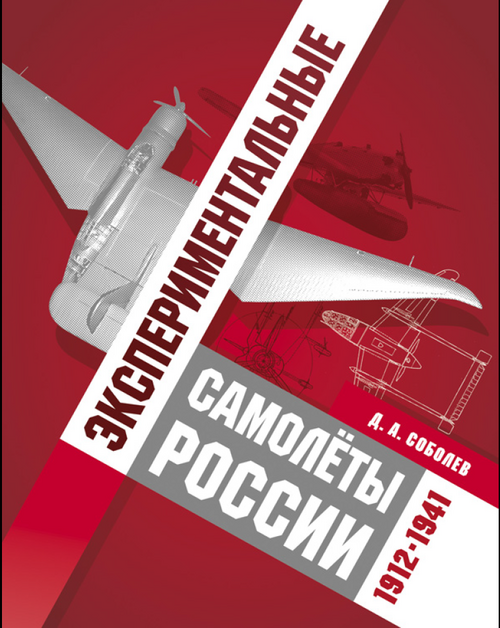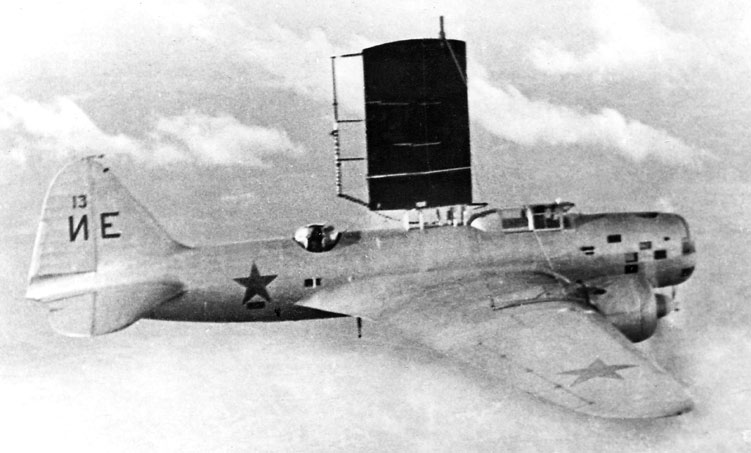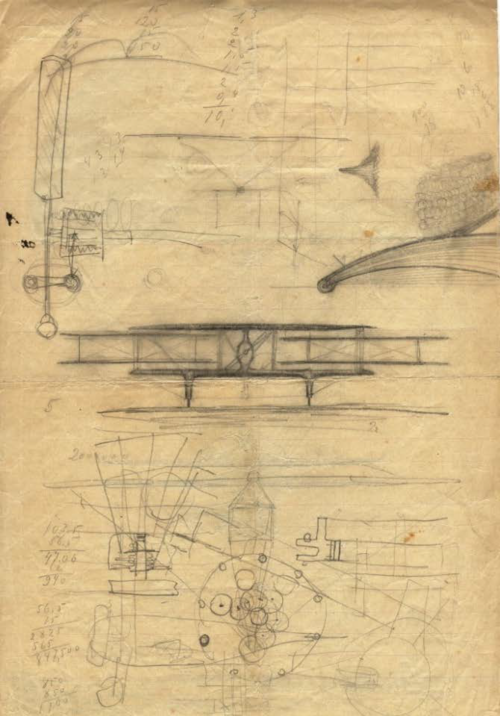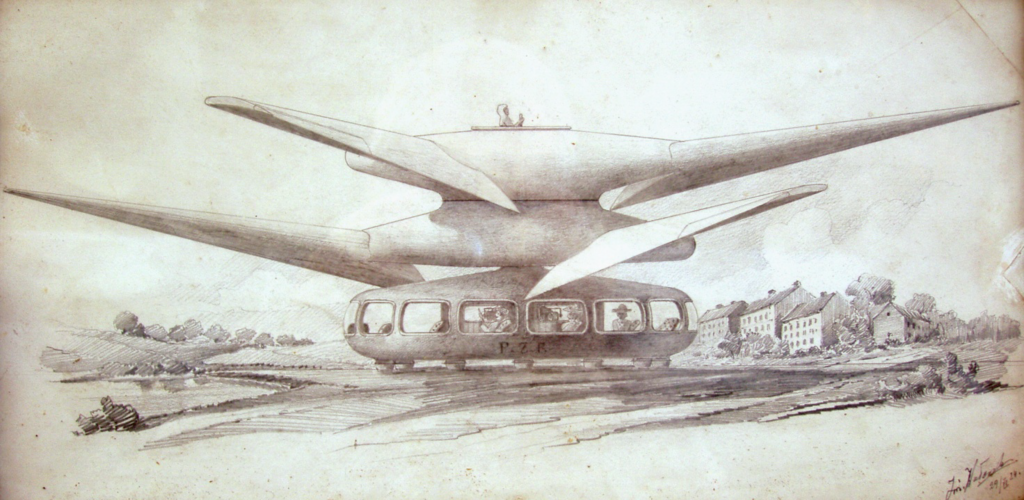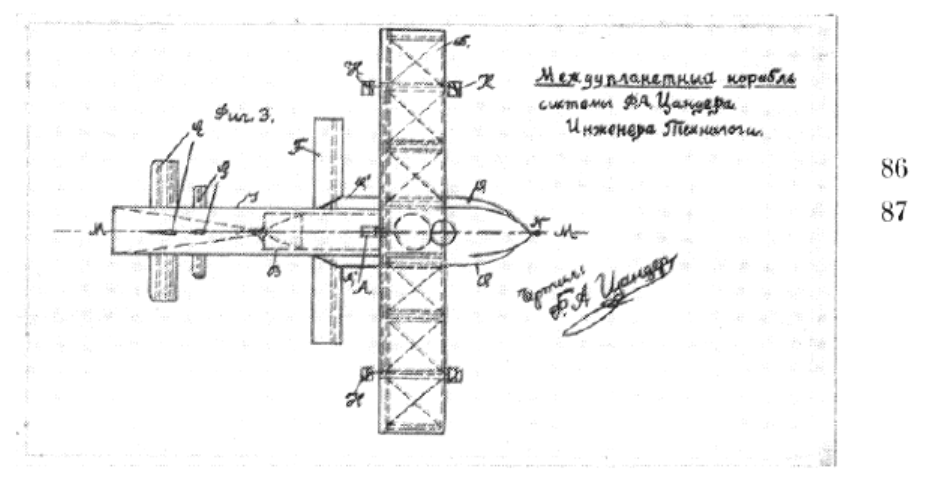You are using an out of date browser. It may not display this or other websites correctly.
You should upgrade or use an alternative browser.
You should upgrade or use an alternative browser.
Various Pre-WWII Soviet Projects & Prototypes
- Thread starter hesham
- Start date
- Joined
- 26 May 2006
- Messages
- 34,342
- Reaction score
- 15,007
However, the picture says that this project is by Anatoly Senkov.
Yes Anatoly Senikov,I will fix it.
- Joined
- 28 January 2008
- Messages
- 634
- Reaction score
- 496
The Senkov ES-1 article in KR 2022-11/12 in Hesham's post #281 also had a comparison with the similar sized PS-84 .
Possibly the PS-84 was to have been used as the base airframe for the project. The design was to have conventional engines in the fuselage along with electric motors. The electric motor development was the responsibility of A.G.Iosifyan. The work was stopped a month before war started and the hybrid aircraft project, along with other electric helicopter work was halted.
The article has three pages of ES-1 details but my knowledge of Russian and technical terms does not lend itself to a coherent translation.
Attached is the artwork from post #281 along with English annotation.
| Comparison of PS-84 & SD-1 | PS-84 | SD-1 |
| Engine | 2x Wright Cyclone 850hp | 2x M-105 1100 hp |
| Ground Speed | 305 km/h | 338 km/h |
| at 2000m | 324 km/h | 363 km/h |
| at 3600m | 305 km/h | 378 km/h |
| Max Ceiling | 7,300 m | |
| Practical Ceiling | 6,000 m | 7,000m |
| Time to 2,000m Height | 8.5 mins | 6.25 mins |
| Time to 3,000m Height | 14 mins | 10 mins |
| Time to 5,000m Height | 45 mins | 19 mins |
| Minimum Landing Speed | 95 km/h | 95 km/h |
| Empty Weight | 6986 kg | 7477 kg |
| Fuel Weight | 2237 kg | 2237 kg |
| Oil Weight | 224 kg | 225 kg |
| Payload | 1279 kg | 467 kg |
Possibly the PS-84 was to have been used as the base airframe for the project. The design was to have conventional engines in the fuselage along with electric motors. The electric motor development was the responsibility of A.G.Iosifyan. The work was stopped a month before war started and the hybrid aircraft project, along with other electric helicopter work was halted.
The article has three pages of ES-1 details but my knowledge of Russian and technical terms does not lend itself to a coherent translation.
Attached is the artwork from post #281 along with English annotation.
Attachments
Douglas DC-3 in Russia, under license, they were built under the designation PS-84Which aircraft is meant by the designation SD.1?
PS-84 is being converted into ES-1 (ЭС-1)
Attachments
- Joined
- 25 July 2007
- Messages
- 4,304
- Reaction score
- 4,085
From, Jahrbuch_der_Luftfahrt_1931_32,
also I think Ossoaviachim A.J.R.3 & A.J.R.4 were a Russian light aircraft ?,am
I right ?.
Not exactly. These references are to the 1938 Yakovlev AIR-3 prototype and 1930 AIR-4 lightplane trainers. Both types were powered by Walter NZ-60 radials imported by Soviet Osoaviachim (or Osoaviakhim) volunteer group - to assist members who were amateur aircraft designers and potential home-/club-builders.. This is likely the origin of your contemporary German source's confusion.
Osoaviachim encouraged amateur aircraft-building through its flying and gliding clubs. The first powered type thus created was Yakovlev's Cirrus-powered AIR-1 in 1926. After the AIR-1 set several sportplane world records, Osoaviakhim collected funds from its members for the development of the AIR-3 prototype.
The ultimate plan for Osoaviakhim was to import both foreign aero-engines and light aircraft which were to be then copied in the Soviet Union. That proved to be unnecessary due to the success of local aircraft designs - by AS Yakovlev; VB Sharov (Walter-powered Sh-2 amphibian); VK Gribovskii (Cirrus-powered G-1 light plane); etc. - and AD Shvetsov's 100 hp M-11 radial engine.
I'm not sure about the exact method of fund-raising for the AIR series. However, Osoaviakhim routinely organized lotteries with their winners presenting funds or individual aircraft to Soviet authorities.
These are light aircraft
AIR-3 was built in 1929.
AIR-4 was built in 1930.
"AIR-4" is a consistent improvement of its predecessor – "AIR-3". Since the flight qualities of the AIR-3 were recognized as good, then during the design and construction of the AIR-4, all the main parameters affecting aerodynamics were basically the same.
AIR-3 was built in 1929.
AIR-4 was built in 1930.
"AIR-4" is a consistent improvement of its predecessor – "AIR-3". Since the flight qualities of the AIR-3 were recognized as good, then during the design and construction of the AIR-4, all the main parameters affecting aerodynamics were basically the same.
- Joined
- 26 May 2006
- Messages
- 34,342
- Reaction score
- 15,007
- Joined
- 26 May 2006
- Messages
- 34,342
- Reaction score
- 15,007
Also from this book,
Airplane project I.A. Rybnikov. The main difference between this composite
aircraft and the “links” of V.S. Vakhmistrov was that in combination, the
lower planes seemed to form a second wing, i.e. the aircraft was a biplane.
All management was carried out pilot of the upper (main) aircraft. In the
air, the vehicles attached under the wing could detach and act independently,
it turned out to be three monoplane aircraft. This project, which appeared in
1936 under the influence of reports of Vakhmistrov’s successful experiments,
was purely speculative and did not contain any calculations or drawings. It
was filed as an application for an invention, but Rybnikov did not receive
an author's certificate.
Airplane project I.A. Rybnikov. The main difference between this composite
aircraft and the “links” of V.S. Vakhmistrov was that in combination, the
lower planes seemed to form a second wing, i.e. the aircraft was a biplane.
All management was carried out pilot of the upper (main) aircraft. In the
air, the vehicles attached under the wing could detach and act independently,
it turned out to be three monoplane aircraft. This project, which appeared in
1936 under the influence of reports of Vakhmistrov’s successful experiments,
was purely speculative and did not contain any calculations or drawings. It
was filed as an application for an invention, but Rybnikov did not receive
an author's certificate.
Attachments
- Joined
- 25 June 2009
- Messages
- 14,478
- Reaction score
- 5,301
It seems to me you are showing two quite different projects here.Airplane project I.A. Rybnikov.
- Joined
- 26 May 2006
- Messages
- 34,342
- Reaction score
- 15,007
It seems to me you are showing two quite different projects here.
Yes of course,the first was,
One of the early options
aircraft "I-Z",
as Google translate.
- Joined
- 26 May 2006
- Messages
- 34,342
- Reaction score
- 15,007
From this book,Советская авиационная техника,,
F. A. Tsatsder (86) built liquid rocket engines in 1930-1933 and
dreamed of building a spaceship (87). V. S. Stechkin (890), a
subsequent academician, published in 1929 a theory of an air-
jet engine, the diagram of which is shown in the photograph (81).
F. A. Tsatsder (86) built liquid rocket engines in 1930-1933 and
dreamed of building a spaceship (87). V. S. Stechkin (890), a
subsequent academician, published in 1929 a theory of an air-
jet engine, the diagram of which is shown in the photograph (81).
Attachments
Similar threads
-
STAL-11,Italian Tourist Aircraft Project ?
- Started by hesham
- Replies: 4
-
Cheranovsky (Cheranovskii) Aircraft and Designs
- Started by hesham
- Replies: 123
-
Various Russian Prototypes and Projects During & Pre-WW1
- Started by hesham
- Replies: 144
-
New book "Bartini and His Projects - Vol.1" by Konstantin Udalov
- Started by gabrielorosco
- Replies: 11
-

